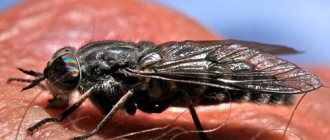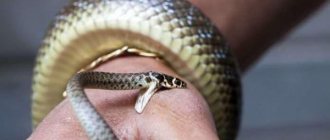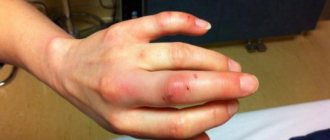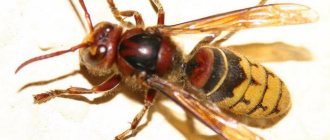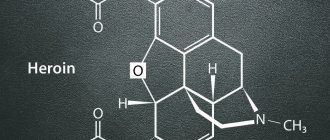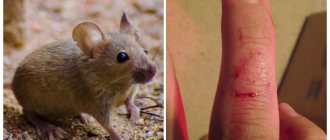Karakurt is a dangerous arachnid, the bite of which can cause serious consequences. This representative secretes poison, it is capable of killing a person. Females, but also males and young representatives are dangerous to people.
However, females are capable of releasing greater amounts of venom when bitten. According to statistics, 4-6% of those bitten by arthropods die.
This means that death does not occur immediately after an insect attack; if assistance is provided to the victim in a timely manner, he can be protected from serious consequences. But it’s still worth studying the features and symptoms of a karakurt bite.
How to Avoid a Black Widow Bite
Contact with a black widow can have serious health consequences, so you should familiarize yourself with some simple tips for preventing bites.
Firstly, be especially vigilant when walking through the forest, park, or while working in summer cottages, because the greatest danger can await a person in nature.
Secondly, do not sleep outdoors in areas where poisonous arthropods can be found.
Thirdly, when spending the night in a tent, place the sleeping places so that they do not come into contact with its internal walls.
Fourthly, when settling down for a rest, carefully inspect the area to make sure there are no black widows.
Fifthly, fill all holes and holes under stones with earth that may contain dangerous spiders.
Sixth, wear clothes with long legs and sleeves.
Seventh, before going to bed in nature, check the bedding into which a black widow might have crawled.
Eighth, use special curtains and tuck them under the bed.
Ninth, dig small ditches around the tents.
Tenth, do not walk on the ground barefoot.
Formation of the clinical picture
Karakurt poison can be fully compared to a neurotoxic gas. Having penetrated the victim’s body, it provokes symptoms that are characteristic of an infectious inflammatory process or an allergic reaction. Initially, redness is noticeable, traces of which will become less noticeable within 1-2 hours. As the toxin affects the central nervous system, the victim experiences strong mental agitation. Aggression towards others may appear. The list of clinical manifestations will be supplemented by the symptoms listed below:
- nausea;
- dizziness;
- the bite of a true black widow results in severe swelling of the soft tissues.
It is a mistake to believe that the clinical picture is no longer developing. Toxicologists identify so-called time-delayed symptoms. As soon as a person is bitten by an arachnid, the victim will feel only a small part of the negative impact on the body.
Important! You should not hesitate to visit a doctor, otherwise after 10 hours at most your health condition will worsen. The negative consequences of a bite from a black widow will become irreversible.
Within 30-60 minutes, the patient will feel acute pain in the abdomen and chest. The heart beats faster, which leads to an increase in blood pressure levels. Other symptoms:
- sudden muscle spasms;
- shortness of breath;
- suffocation;
- the skin becomes pale;
- With an acute lack of oxygen, the skin turns blue.
What are the consequences of a black widow bite?
Black widow venom is neurotoxic. It has a yellow color and an oily consistency. The venom contains alpha-latrotoxin, which promotes the release of acetylcholine, norepinephrine and other mediators and the depletion of their reserves. First, the poison spreads through the lymphatic vessels, then enters the circulatory system. It spreads through the blood throughout the body. Black widow venom causes a specific clinical syndrome called latrodectism.
The spider bite itself is not noticeable at first. It feels like a pin prick. After a while, two small red dots, slight erythema and swelling appear on the bitten area. Necrotic wounds do not develop.
Half an hour to an hour after the spider bite, painful muscle spasms begin to appear. They are first observed at the site of the bite, then spread to the large muscles of the limbs and torso. After this, significant tension in the muscles of the anterior abdominal wall and severe pain appear, which resemble the symptoms of peritonitis. However, palpation of the abdomen is not painful. The last thing to tense is the facial muscles. It becomes sweaty, distorted by a grimace of pain. It shows signs of blepharoconjunctivitis and lacrimation. In addition, the following symptoms may occur:
- salivation,
- pouring sweat,
- vomit,
- arterial hypertension,
- tachycardia,
- dyspnea,
- anxiety,
- headache,
- weakness in the body,
- fasciculations,
- paresthesia,
- hyperreflexia,
- urinary incontinence.
Sometimes renal failure is recorded.
Painful sensations begin to subside during the first 12 hours. However, they may become stronger again over the next days and weeks.
Plus, there are side effects caused by the body’s allergic reaction to the poison.
What not to do
When encountering any spider in nature, even the smallest one, it is not recommended to pick it up. If, after a bite, attempts are made to suck out the poison, then you should not cut the wound to facilitate the outflow of blood, because this will only increase the pain and may contribute to infection.
There is no need to apply tourniquets or tighten the limb in any way. This increases the concentration of the toxin in a certain area, causing blood stagnation, which can lead to irreparable consequences. Cauterizing the wound is also not effective.
What not to do if you are bitten by a black widow
You should not press a poisonous arthropod to your body or pick it up with your hands.
You should not cut the wound either crosswise or in a striped manner. Such actions will not only bring no benefit, but will also injure the victim even more.
It is not recommended to apply a tourniquet above or below the level of the bite.
You should not cauterize the wound with anything, since the effectiveness of this method has never been proven.
What measures can you take if you are bitten by a black widow?
A bite from this dangerous spider requires immediate medical attention. The most effective way to treat a bite is to inject a special serum. However, on the way to the hospital it is possible and even necessary to provide first aid to the victim.
1. Try to suck the poison out of the affected area for the first 5-10 minutes. For this purpose, you can use improvised means that can create a vacuum, or suck it out with your mouth. However, the latter option is allowed only with an ideally healthy oral cavity, in which there are no wounds, stomatitis, caries, gingivitis and other similar diseases. Otherwise, the poison may end up in the circulatory system. After sucking, rinse your mouth with water.
2. Immobilize the bitten limb and minimize movement of the victim.
3. Give the bitten person a hot drink in small doses, which will enhance the removal of poison from the body.
4. If chills, cold sensations, and muscle tension occur, warm the victim’s limbs.
5. Apply a cold compress to the bite site, which will reduce pain.
6. If necessary, use any pain reliever.
general information
The spider is easily recognizable due to its unique coloring, rounded abdomen and thin black legs. The latter do not differ in length. Their arrangement is somewhat reminiscent of a comb, because special bristles are formed on the hind legs for catching prey.
The predator is capable of quite skillfully throwing long strands of web. As a rule, fairly large animals are hunted, such as frogs, small snakes and lizards.
Each species has its own special color scheme. Common are the black color of the legs and cephalothorax; for example, in America, species completely painted in dark tones are more common.
Other rare specimens in this part of the world have an hourglass-like pattern on their abdomen. Representatives of the Eurasian continent have a spotted color (see photo).
Interesting. Previously, black widows were considered the most poisonous spiders on the planet, but in 2010 a new species was discovered and studied - the Brazilian soldier spider, which currently leads the championship among the most toxic representatives of its class.
What does a spider bite look like?
spider bite the next day
Most spider bites have common characteristics, such as a small blister in the middle, swelling and swelling surrounding the bite site, and a large circle of redness. On the outer side of the bite site the redness is paler. It's important to note that a spider can only bite once, so if you have multiple bites, it's likely that it was someone else who bit someone other than a spider, or that multiple spiders bit you at once. A typical spider bite goes away within a few days and, in most cases, does not require special attention. However, if the bite site looks different - a large bubble appears, bright redness quickly spreading to the sides, blue discoloration of large areas of the skin - these are serious signs that you need to react to immediately and contact a medical facility immediately. In the photo you can see the differences - what a bite from a safe spider looks like and a bite that is dangerous to health.
Cross spider bite
The cross is a small creature harmless to humans that lives quietly, hunting insects that fall into their nets. The sharp poisonous fangs of the spider are primarily a tool for hunting and serve to protect it from other spiders. The victim, falling into the trap, is quickly paralyzed by the poison, and then the spider devours it. The cross spider looks quite harmless - it is distinguished by its characteristic cross pattern on its back. The color varies from green to gray, depending on the habitat. The cross is very common - it lives almost everywhere.
A human bite can only be accidental. Their teeth are not able to damage hard skin, but thinner areas of the body are not a problem. Most often, this situation can arise while walking in the forest, picking mushrooms or traveling. Cross plants grow quickly and can reach impressive sizes in late summer.
They stretch webs of web between the trees at the height of a human face. An inattentive mushroom picker falls into the network being laid and completely destroys it. Then the insect, willy-nilly, tries to escape or hides under clothing. At the moment, we can accidentally crush the insect and then the spider bites.
Sometimes such situations occur during sleep. Spiders are nocturnal creatures and often move around looking for good hunting spots. A sleeping person, feeling a slight tingling sensation on his body, instinctively trying to scratch himself, crushes it, exposing himself to a bite. Erythema or swelling may occur on the body in the area of the spider bite. Usually these symptoms go away on their own.
The poison of the cross does not cause any harm to humans. However, people with allergies or sensitive to spider toxins should consult a doctor.
Symptoms of poisoning from a scorpion sting
Increasing visual impairment, ptosis, involuntary contractions of the tongue muscles are noted, and speech becomes slurred. Within 2-3 hours after the poison is introduced into the body, breathing is impaired and pulmonary edema develops. Death occurs due to the phenomena of increasing acute cardiovascular and respiratory failure.
We recommend reading: Allergies, itchy hands
When assessing the degree of toxicity of arthropod venom, the following was noted:
- Tarantula venom is less toxic than karakurt and scorpion venom;
- The venom of karakurt and scorpion (belongs to toxalbumin) is more toxic than the venom of snakes (
15 times). However, fatal poisonings are much less common. This is due to the smaller amount of poison.
allergic reaction to a scorpion sting
They stretch webs of web between the trees at the height of a human face. An inattentive mushroom picker falls into the network being laid and completely destroys it. Then the insect, willy-nilly, tries to escape or hides under clothing. At the moment, we can accidentally crush the insect and then the spider bites.
Further treatment
If a spider has bitten a child, an elderly person, an allergy sufferer, or if the symptoms intensify, you should immediately consult a doctor.
If the painful sensations are mild, then you can get by with pharmaceuticals:
- antihistamines - even if there were no allergic reactions before;
- paracetamol and preparations containing it - when the temperature rises;
- local agents that relieve inflammation (it is better to use non-steroidal ones);
- analgesics and antispasmodics - to reduce spasms and stiffness in the chest and abdomen.
You should also monitor your blood pressure level so that if it suddenly increases or decreases, you can take timely action.
Check out the most poisonous spiders in Russia.
Folk remedies for bites
To eliminate unpleasant symptoms and accelerate the healing of the epidermis, use:
- Vinegar solution. For a glass of water, 1 teaspoon of the product. Treat the bite site.
- Baking soda paste. Dilute with water to a paste.
- Juice of lemon, orange, cucumber, onion, parsley, potato, as well as dandelion, plantain, celandine.
- Toothpaste, shaving foam. Apply to the bite site for 5 minutes and wash off.
- Aloe vera leaves or juice.
They are used for minor manifestations of allergies or as an aid.
